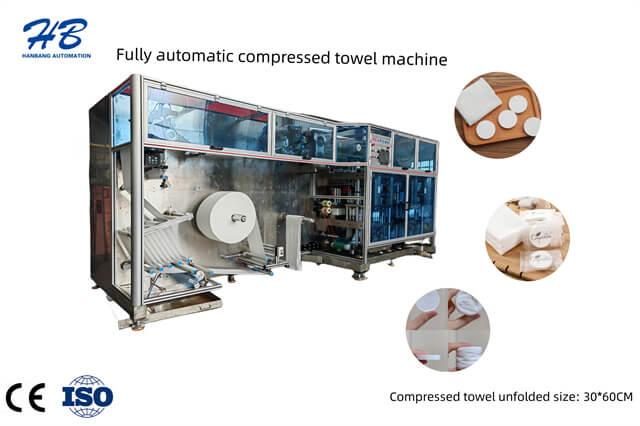Author:HB Nonwoven MachineryFROM:Compressed Towel Machine Manufacturer TIME:2024-04-29
perforating machines play a crucial role in the non-woven industry, especially in the production of items like diapers and sanitary napkins. These machines offer several technical features that contribute to the efficiency and quality of the manufacturing process. In this article, we will explore the various technical features of non-woven perforating machines.

One of the primary technical features of non-woven perforating machines is their ability to operate at high speeds. These machines are equipped with advanced motors and control systems, allowing them to produce a large number of perforated non-woven materials in a short period. The high-speed operation ensures increased productivity and meets the demand of the industry.
Non-woven perforating machines are designed with precision punching mechanisms that ensure accurate and consistent hole patterns on the materials. This feature is crucial for maintaining the product quality, as even slight deviations can impact the functionality of diapers and sanitary napkins. The precision perforating also minimizes material wastage, contributing to cost-effectiveness in production.
Another noteworthy feature of non-woven perforating machines is their flexibility in creating holes of different sizes and shapes. Manufacturers in the diaper and sanitary napkin industry often require specific hole configurations to meet the evolving consumer demands. These machines allow customization, enabling manufacturers to produce products with unique hole patterns while maintaining the overall integrity of the materials.
Automation plays a key role in modern manufacturing processes, and non-woven perforating machines are no exception. These machines incorporate automatic material alignment systems that ensure precise positioning of the materials before perforating. This feature eliminates manual errors and enhances the overall efficiency of the production line.
To simplify operation and minimize training requirements, non-woven perforating machines are equipped with user-friendly interfaces. These interfaces allow operators to set parameters such as hole size, shape, and positioning with ease. Additionally, real-time monitoring and diagnostics enable operators to identify and address any issues promptly, minimizing downtime and maximizing productivity.
Given the growing focus on sustainability, energy efficiency is a critical consideration in manufacturing equipment. Non-woven Perforating machines incorporate energy-saving features, such as optimized motor systems and intelligent power management. These features reduce energy consumption, resulting in lower operational costs and a reduced environmental footprint.
Non-woven perforating machines are designed for durability and reliability. They require minimal maintenance, thanks to features like self-cleaning mechanisms and robust construction. Routine maintenance tasks can be performed easily, ensuring unin

Integration with existing production lines is crucial for seamless manufacturing processes. Non-woven perforating machines are designed to facilitate

Non-woven perforating machines offer a range of technical features that contribute to the productivity, quality, and sustainability of the diaper and sanitary napkin industry. With high-speed operation, precision Perforating, flexibility in hole size and shape, automatic material alignment, user-friendly interfaces, energy efficiency, low maintenance requirements, and integration capabilities, these machines are essential in meeting the demands of the market. Manufacturers can rely on these technical features to optimize their production processes and deliver high-quality products to consumers.





